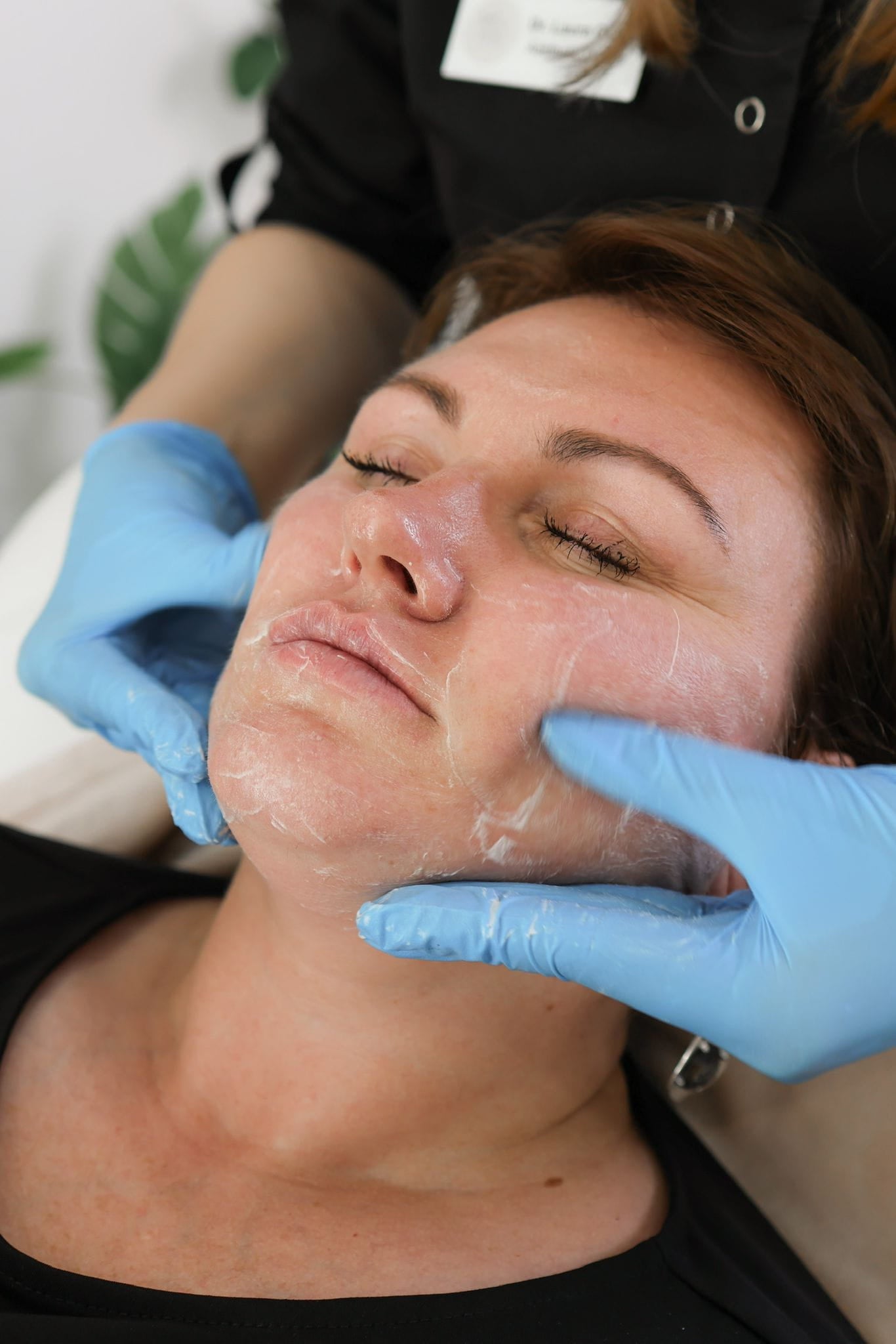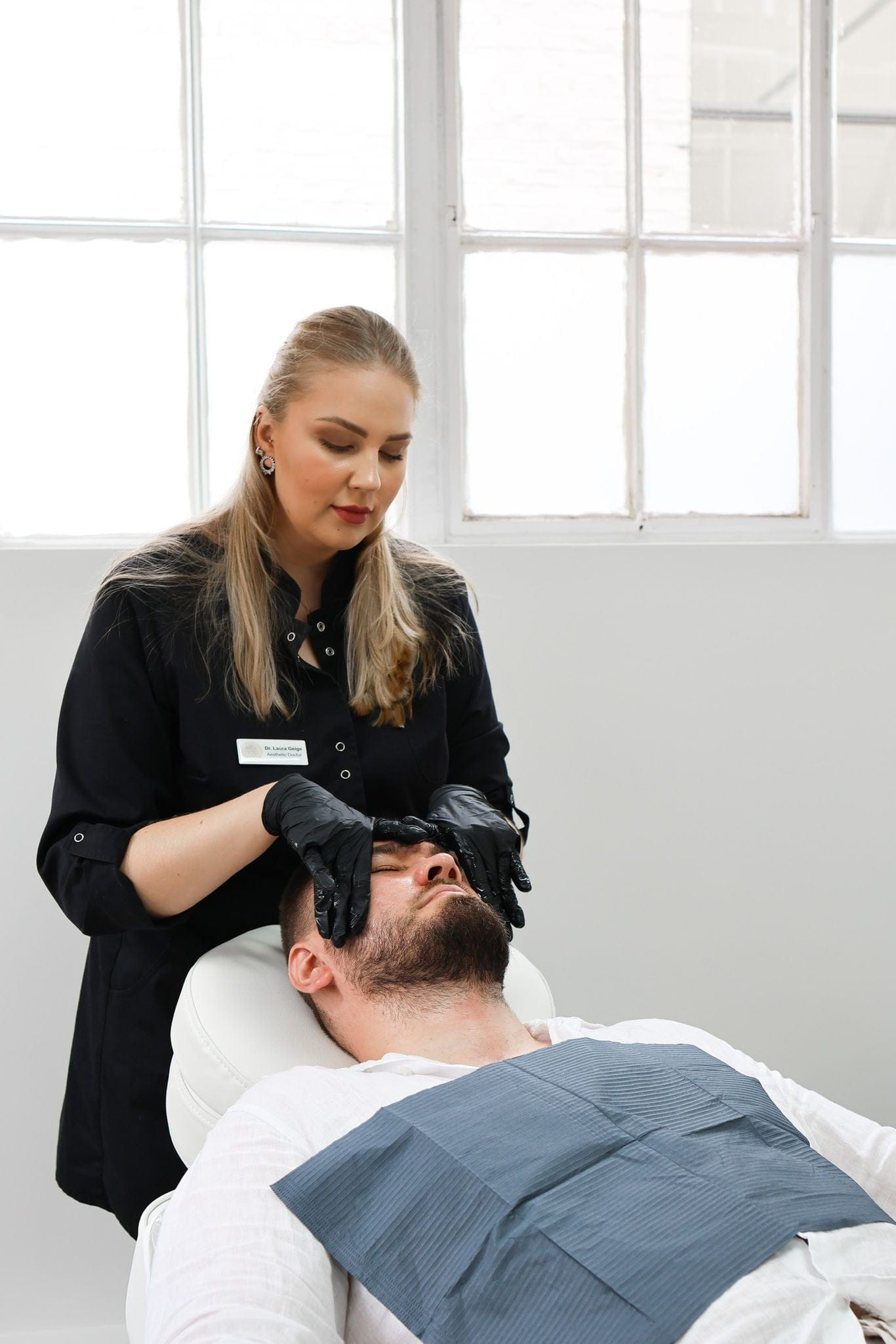Possible Complications
While Cosmelan depigmentation peels can offer significant benefits for those seeking to address hyperpigmentation, it’s important to understand potential complications. These complications range from mild, temporary side effects to more serious issues that require medical attention.
Short-Term Side Effects
Short-term side effects of the Cosmelan peel are typically mild and include redness, peeling, itching, and dryness of the skin. These symptoms usually resolve within a week or two. In some cases, individuals may experience sensitivity to sunlight, requiring diligent use of sunscreen for several weeks following the treatment.
Long-Term Side Effects
Long-term side effects are less common but can occur. Potential complications include post-inflammatory hyperpigmentation (PIH), where the skin darkens after the initial peeling phase. This is more likely to happen in individuals with darker skin tones and requires careful monitoring. Other potential long-term issues include scarring, though this is rare when the peel is administered correctly by a qualified professional.
It’s important to note that individual reactions to Cosmelan peels vary, and some people may experience no complications at all. However, it’s crucial to be aware of the potential risks and discuss them thoroughly with a dermatologist before undergoing treatment.
Allergic Reactions
Understanding potential complications associated with Cosmelan depigmentation peels is essential for anyone considering this treatment. While the peel offers promising results in addressing hyperpigmentation, it’s important to acknowledge that both short-term and long-term side effects can occur.
Symptoms of Allergic Reactions
Allergic reactions are immune system responses to substances that are typically harmless to most people. These substances, known as allergens, can trigger a range of symptoms, from mild to severe.
Common symptoms of allergic reactions include skin rashes, itching, hives, swelling, runny nose, sneezing, watery eyes, coughing, wheezing, and difficulty breathing. In severe cases, an allergic reaction can lead to anaphylaxis, a life-threatening condition that requires immediate medical attention.
Allergic reactions can be triggered by various substances, including pollen, dust mites, mold, pet dander, certain foods (such as peanuts, shellfish, and eggs), medications, insect stings, and latex.
Treatment for Allergic Reactions
Treatment for allergic reactions depends on the severity of the symptoms. Mild allergic reactions can often be managed at home with over-the-counter medications such as antihistamines to relieve itching and swelling.
For more severe reactions, medical attention may be necessary. In cases of anaphylaxis, immediate epinephrine injection is required.
It’s important for individuals with known allergies to carry appropriate medication, such as an epinephrine auto-injector, and to avoid exposure to their triggers whenever possible.
Hyperpigmentation
Hyperpigmentation refers to the darkening of skin patches due to an overproduction of melanin, the pigment responsible for skin color. This can occur from various factors like sun exposure, hormonal changes, or certain medical conditions.
Causes of Hyperpigmentation
Hyperpigmentation is a common skin condition characterized by darkened patches on the skin’s surface.
Causes of hyperpigmentation are diverse and can be triggered by numerous factors. Sun exposure, often referred to as solar lentigines or sun spots, is a primary culprit as UV radiation stimulates melanin production. Hormonal fluctuations during pregnancy (melasma) or conditions like polycystic ovary syndrome (PCOS) can also lead to hyperpigmentation.
Certain medications, including some antibiotics and anticonvulsants, can have hyperpigmentation as a side effect. Skin injuries, inflammation, and even certain types of skin cancer can contribute to hyperpigmentation. Genetic predisposition also plays a role, making some individuals more susceptible to developing dark patches on their skin.
Treatment for Hyperpigmentation
While Cosmelan depigmentation peels can offer significant benefits for those seeking to address hyperpigmentation, it’s important to understand potential complications. These complications range from mild, temporary side effects to more serious issues that require medical attention.

Short-term side effects of the Cosmelan peel are typically mild and include redness, peeling, itching, and dryness of the skin. These symptoms usually resolve within a week or two. In some cases, individuals may experience sensitivity to sunlight, requiring diligent use of sunscreen for several weeks following the treatment.
Long-term side effects are less common but can occur. Potential complications include post-inflammatory hyperpigmentation (PIH), where the skin darkens after the initial peeling phase. This is more likely to happen in individuals with darker skin tones and requires careful monitoring. Other potential long-term issues include scarring, though this is rare when the peel is administered correctly by a qualified professional.
It’s important to note that individual reactions to Cosmelan peels vary, and some people may experience no complications at all. However, it’s crucial to be aware of the potential risks and discuss them thoroughly with a dermatologist before undergoing treatment.
Understanding potential complications associated with Cosmelan depigmentation peels is essential for anyone considering this treatment. While the peel offers promising results in addressing hyperpigmentation, it’s important to acknowledge that both short-term and long-term side effects can occur.
Scarring
Scars are a common outcome of skin injury or trauma. They form as the body attempts to repair damaged tissue, often leaving behind raised, pigmented, or depressed marks on the skin’s surface.
Types of Scarring
Scarring is a natural part of the healing process following skin injury. The types of scars that develop depend on various factors, including the depth and severity of the wound, individual healing patterns, and genetics.
There are several distinct types of scarring: hypertrophic scars are raised and thickened, typically appearing red or pink due to increased collagen production. Keloids are a more severe form of hypertrophic scars that extend beyond the original wound boundaries. Atropic scars, also known as depressed scars, occur when there is insufficient collagen production during healing, resulting in sunken areas on the skin.
Other types of scarring include acne scars, which can be pitted or raised depending on the severity of the acne lesions, and surgical scars, which may fade over time but can leave noticeable marks.
Prevention and Treatment of Scarring
Scarring is a natural part of the body’s healing process after an injury or trauma to the skin.
Scars form when the body produces excess collagen to repair damaged tissue. The type and appearance of a scar depend on factors like the severity of the injury, individual healing abilities, and genetics.
There are several types of scars:
Hypertrophic scars are raised and thickened, often appearing red or pink due to increased collagen production. Keloids are a more severe form that extends beyond the original wound boundaries.
Atrophic scars (depressed scars) occur when there’s insufficient collagen production, leaving sunken areas on the skin.
Other scar types include acne scars (pitted or raised), and surgical scars which may fade but can leave noticeable marks.
Preventing scarring involves minimizing injury to the skin and protecting wounds from infection.
Scar treatment aims to minimize the appearance of scars or improve their texture.
Treatments include topical creams containing silicone or retinol, laser therapy, steroid injections, surgical revision (for keloids), and pressure therapy (for hypertrophic scars).
Infection
While Cosmelan depigmentation peels can offer significant benefits for addressing hyperpigmentation, it’s crucial to be aware of potential complications. These range from mild, temporary side effects like redness, peeling, itching, and dryness, to more serious issues requiring medical attention.
Signs of Infection
Infection occurs when harmful microorganisms such as bacteria, viruses, fungi, or parasites enter the body and multiply.
Signs of infection can vary depending on the type of microorganism involved and the location of the infection. Common signs include:

redness, swelling, pain, warmth, pus, fever, fatigue, and chills.
Treating Infections
Infection occurs when harmful microorganisms such as bacteria, viruses, fungi, or parasites enter the body and multiply.
Signs of infection can vary depending on the type of microorganism involved and the location of the infection. Common signs include redness, swelling, pain, warmth, pus, fever, fatigue, and chills.
Treatment for infections depends on the type of organism causing the infection and its severity. Antibiotics are often used to treat bacterial infections, while antiviral medications are used to treat viral infections. Antifungal medications are used to treat fungal infections, and antiparasitic medications are used to treat parasitic infections.
In some cases, surgical intervention may be necessary to drain an abscess or remove infected tissue.
Preventing infection involves practicing good hygiene, such as washing hands frequently, covering wounds, and avoiding contact with sick individuals.
Other Complications
While Cosmelan depigmentation peels offer significant benefits for addressing hyperpigmentation, it’s crucial to be aware of potential complications. These range from mild, temporary side effects like redness, peeling, itching, and dryness, to more serious issues requiring medical attention.
Post-Inflammatory Hyperpigmentation
Post-inflammatory hyperpigmentation (PIH) is a common complication that can occur after any skin trauma, including cosmetic procedures like Cosmelan peels. It presents as darkened patches on the skin where inflammation has occurred.
PIH is more likely to affect individuals with darker skin tones due to variations in melanin production.
Careful monitoring and proper aftercare are essential to minimize the risk of PIH. This typically includes using sunscreen diligently, avoiding picking or scratching the treated skin, and following a post-treatment skincare regimen as advised by the dermatologist.
In some cases, treatments like topical creams or laser therapy may be recommended to fade PIH if it develops.
Skin Sensitivity
Skin sensitivity is a common side effect of the Cosmelan peel, often leading to increased vulnerability to irritation and allergic reactions.
- Sun Sensitivity: The peel can make skin more sensitive to sunlight, increasing the risk of sunburn and hyperpigmentation.
- Irritant Reactions: Individuals may experience itching, redness, or stinging sensations after applying skincare products or coming into contact with certain substances.
Transform your skin with Cosmelan Depigmentation Peel at It’s Me & You Clinic by Dr. Laura Geige.
